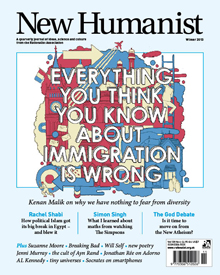
Kenan Malik in Eurozine:
There has recently been built in Merton in south London a “mega mosque” that has inevitably become the focus of much controversy. In his book The British Dream, David Goodhart takes the mosque as symbolic of the unacceptable change that immigration has wrought upon the nation. The mosque, he writes, “replaced an Express Dairies bottling plant which provided a few hundred jobs for local people and lots of milk bottles – an icon of an earlier, more homogenized age.”
There was, in fact, a seven-year gap between the closing of the dairy in 1992 and building work beginning on the mosque. In those seven years the abandoned dairy was, according to local accounts, turned into a crack den. So, one story we could tell is that of economic forces closing down an unprofitable dairy, with the loss of several hundred jobs, and of local Muslims subsequently rescuing the abandoned, crime-infested site, creating new jobs and in the process transforming Merton for the better. Critics of immigration want, however, to tell a different story. The mosque, in their eyes, is symbolic not of the rescue of a site from abandonment and crime, but of the original closure of the dairy and of the transformation of Merton's old way of life.
The story of the Merton mosque, and the retelling of that story as a narrative of cultural loss, gets to the heart of the contemporary debate about immigration. Immigration is clearly one of the most fiercely debated and toxic issues of today. The debate is, however, less about the facts than about the existential impact. Immigration has become symbolic of the disruption of communities, the undermining of identities, the fraying of the sense of belongingness, the promotion of unacceptable change. For Goodhart, “large-scale immigration” has created “an England that is increasingly full of mysterious and unfamiliar worlds”. He quotes one man from Merton: “We've lost this place to other cultures. It's not English any more.”
The roots of The British Dream lie in Goodhart's 2004 essay in Prospectmagazine, of which he was then editor, called “Too Diverse?”. Liberals, he suggested, had to face up to a “progressive dilemma”. Too much immigration undermined social solidarity, particularly in a welfare state. We had to choose between the two. The essay caused considerable controversy, but the idea that too much immigration undermines social solidarity has over the past decade become almost common sense.
More here.
